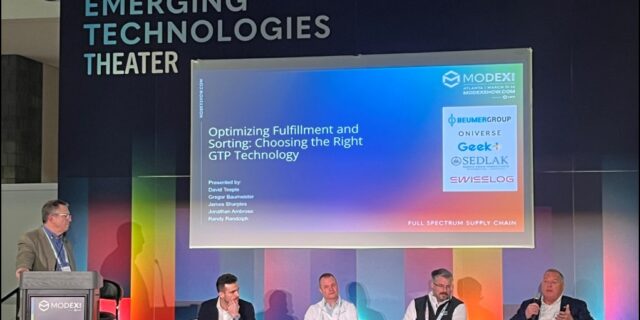‘Tis the Season to Battle for Warehouse Labor
September 20, 2017 By: Louis J. Cerny | Topics: Productivity & Labor, Retail & CPG, WholesaleThe retail holiday season is fast approaching, and so is the battle for temporary warehouse labor. In the distribution hub of central Ohio, yard signs advertising warehouse hiring this time of year are commonplace, but since Amazon opened two fulfillment centers in the Columbus area, so are TV recruiting ad campaigns and mass “hiring days.”
Labor is typically among the top operational costs in a distribution center, and a large-scale ecommerce fulfillment center – whether it’s a highly automated or a manual operation – can require two to three times the number of workers of a retail replenishment center or wholesale warehouse. Add in a 4.2 percent national unemployment rate and predictably high rates of turnover, and the exploding demand for warehouse workers has created a shortage that is driving up the costs of recruiting, hiring and training for the companies who need them.
A report by real estate and logistics services firm JLL noted that the labor drain resulting from ecommerce spikes over the past two years have pushed retail distribution out of traditional geographies such as the Inland Empire in southern California, Dallas/Fort Worth, and New York/New Jersey and into the Midwest. The top ten U.S. cities for ecommerce fulfillment now include four from the Midwest – Cincinnati, OH, Indianapolis, IN, St. Louis, MO, and Columbus – and even these markets face shrinking labor pools during the holiday season.
The “Amazon effect” and overall growth in ecommerce have pushed up wages for warehouse workers since 2011 by $1.70 per hour, with a bigger jump in the month of December, and some high demand areas enacting wage increases of up to $3 per hour, according to national logistics staffing agency ProLogistix.
As the scarcity of warehouse labor continues to add to distribution costs, there are some actions companies should consider to help reduce peak hiring needs:
Optimize Your Operation – How far do your pickers travel to fill an order? Are your staging areas and workstations cluttered? How many times is an item handled as it moves from receiving to shipping? An expert assessment of your operations can often reveal low cost opportunities that can significantly improve product flow and increase throughput.
Invest in Automation – Innovation in warehouse automation is moving at a rapid pace, and a variety of technologies are now available to streamline distribution processes and reduce handling requirements – high-speed sortation, voice- and light-directed picking, goods-to-person systems, and robots working alongside human workers, to name a few. The right solution – especially when applied to the pick-pack-ship functions – can decrease labor requirements, increase order fulfillment accuracy, and bring a reasonable return on investment.
Diversify Fulfillment Locations (Regional) – Additional distribution locations can leverage the demand for labor across several regions, reducing the saturation of one region. Supplemental distribution centers during peak period can be temporary leased locations (“pop-up” DC concept) that can flex up or down, based on seasonal requirement. Benefits of a regional network model include reduced transportation cost (typically among the top costs in a network), improved service levels to customers, and a contingency for disaster recovery.
Diversity Fulfillment Locations (Brick and Mortar) – Using your retail infrastructure for ecommerce fulfillment – particularly for single SKU orders – can help reduce peak demand on your fulfillment centers, save shipping costs, and improve service times to customers. Offering customers the option to order online and pick up in store can also drive incremental in-store purchases. Over 60% of respondents to a survey by ChargeItSpot said they made an unexpected purchase when picking up an online order.
Implement a Labor Management System – Getting more out of your existing workforce can reduce the need to add to your headcount, and standardized processes and accurate benchmarks can help eliminate wasted time and energy in your operations. Over 60 percent of companies that introduce an LMS see a productivity improvement rate of 10 percent or higher, which can translate into a significant savings, according to a survey by Peerless Media Research.
Improve Your Employee Work Environment – Is the parking lot well-lit and secure? Are break rooms and restrooms clean and inviting? Do you provide any perks? Providing a more pleasant environment for your employees can help with retention and employee referrals. And don’t ignore your management style. A recent survey on employee turnover by DC Velocity in conjunction with ARC Advisory Group noted that more than half of the top practices contributing to high-performing distribution operations (those with lowest employee turnover) centered around management techniques – specifically, managers who frequently monitor employees and provide positive reinforcement.
Since 1958 Sedlak has provided independent, innovative and actionable distribution solutions to retailers, 3PL providers, wholesalers and healthcare companies. Our precision data analytics, focus on process improvements, and intelligent use of technology help companies achieve operational efficiencies and satisfactory return on investment. To learn more, complete the Contact Us form below.







